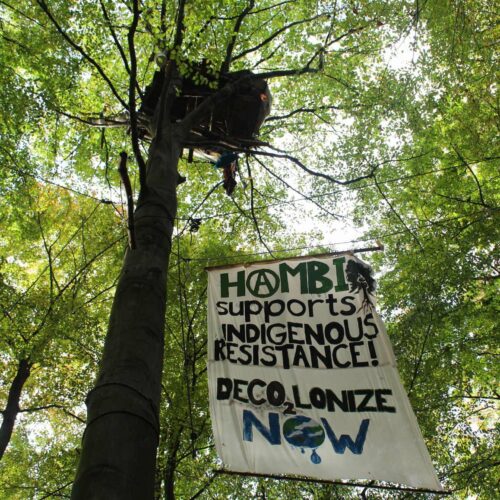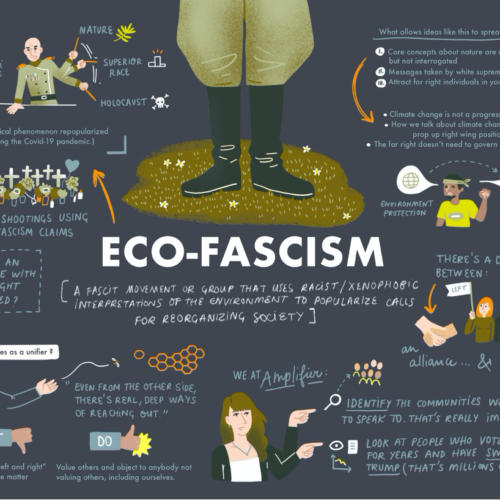*this article was written by Guerrilla grantees who led a workshop on forest-protection movement-building as part of our P2P training series.
In Poland, an iconic and successful campaign to protect the Białowieża Forest from logging led to the growth of a diverse mosaic of forest protection movements all across the country. Can it grow all the way to Brussels impacting the EU policies?
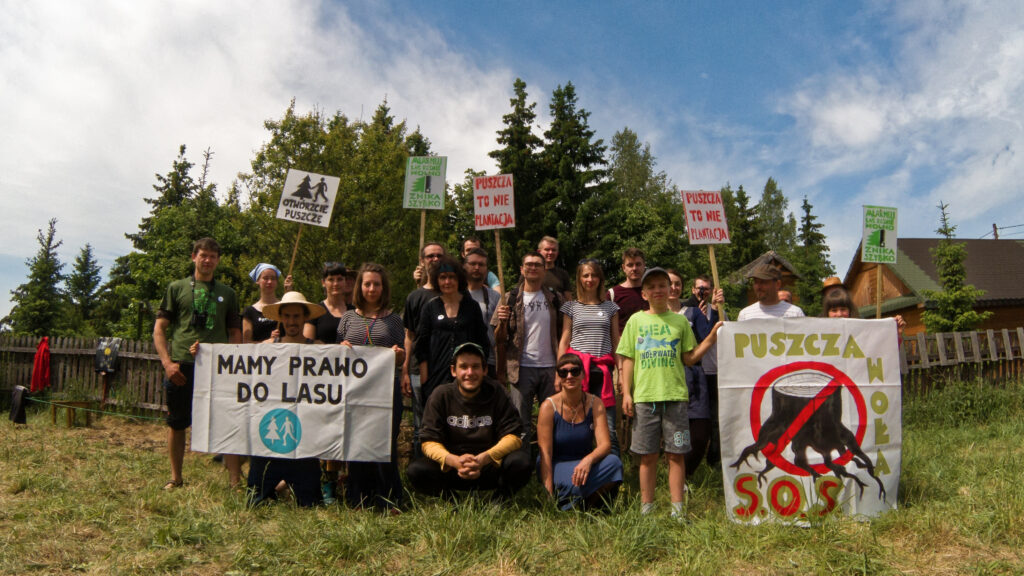
Logging in Białowieża Forest in 2017 was a turning point for the Polish environmental movement. The right-wing government of Law and Justice decided to start intense logging in a forest considered to be the most natural lowland forest ecosystem in Europe. The decision, contested by the EU, UNESCO as well as scientists and environmentalists from all over the world, triggered a massive citizen mobilization. Manifestations, performances and civil disobedience actions, including physical blockades of logging, brought together thousands of people from Poland and abroad.

Campaigners were lucky to have large segments of media on their side. The conflict around the forest took place in the midst of a deep social conflict in Poland. In the autumn of 2015, the conservative and eurosceptic Law and Justice party won parliamentary elections. What followed was a hectic period of actions undermining the rule of law, reproductive rights and environmental protection. It was met by resistance on the streets, in courtrooms and in the parliament. Media outlets antagonistic towards the government were only waiting for another emanation of the conflict. Images of activists chaining themselves to the huge logging machines spread across the internet like wildfire, as did gentle femme-activism; mothers with their babies sat in mourning on tree-stumps. There was virtually no one in the country who hadn’t heard about logging and more than 80% of the society was against it.

Thanks to a massive civil mobilization on the ground, intense legal campaigning towards the EU institutions and finally the intervention of the European Court of Justice, the logging was stopped. It was a big victory for nature as well as for thousands of people who took part in non-violent direct actions, manifestations and civil monitoring of logging. The success of Białowieża showed that civil mobilization and bottom-up pressure can be efficient tools in efforts to protect the environment.
The campaign, especially the camp in the Białowieża forest, where the majority of actions were initiated, became a major activism-academy for a new generation of activists. They learnt how to do bottom-up organising, got to know people similar to them and experienced the incredible spirit of community built around different values than competition and exploitation. As Rebecca Solnit beautifully described it in the Hope in the Dark activism “is not only a toolbox to change things but a home in which to take up residence and live according to your beliefs, even if it’s a temporary and local place, this paradise of participating, this vale where souls get made.”

It is hardly a coincidence that dozens of new anti-hunting, climate and anti-logging grassroots groups appeared all over Poland in the following years. The Polish environmental movement for more than 2 decades dominated by strategies centred around high-level advocacy and legal work got a new breath of life. The wave of resistance against the exploitation of nature started to rise.
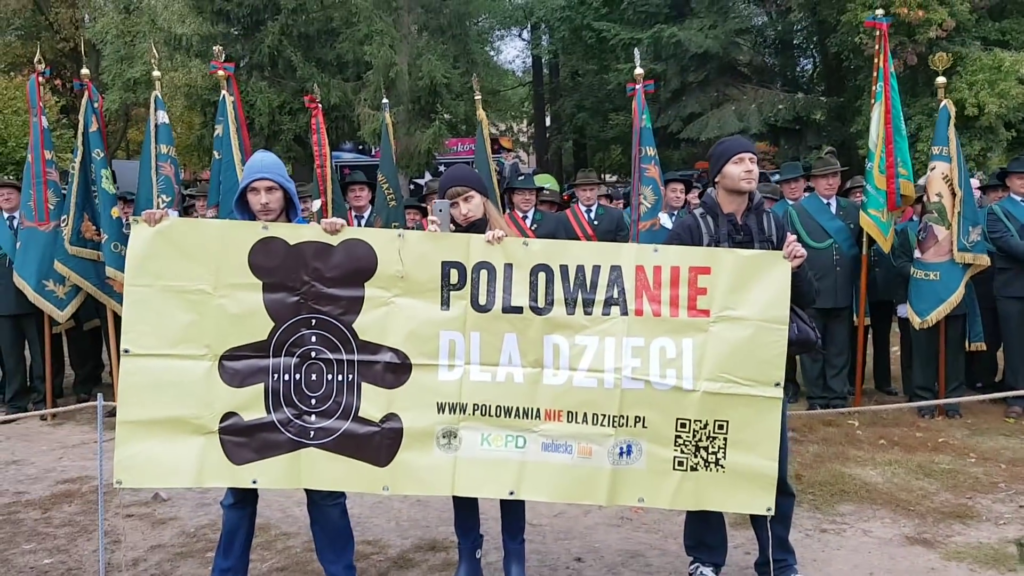
restrictions
In the beginning, the points of resistance were dispersed and isolated one from another. Here an association of inhabitants of a small town opposing clearcutting in their favourite forest, there a group resisting intense logging in a natural park neighbouring an urban agglomeration, in yet another place a small grassroots movement organised around an idea of creating a national park in a valuable, yet intensively logged forest complex. The groups were heterogeneous, some small, other relatively big, some informal, other formal, some consisting of expert environmentalists, others of amateurs, some focused exclusively on their local forest, while others bringing to the table the whole pallet of progressive intersectionality. Yet there was one thing all of them had in common – they fought to stop logging in forests they considered precious to maintain their way of life or for their natural value.

With time, the diverse mix of initiatives started to solidify becoming what today we can call the Polish anti-logging movement. The number of initiatives kept growing. At the networking events, people realized they were not alone – similar battles were being fought all over the country. Finally, common actions were taken – the first was organized in 17 cities and towns of Poland urging decision-makers to protect the old-growth forests of the Carpathians. The second united over 100 groups from the entire country under the slogan “common forest” and demands of changing the forest management model in Poland.
As a consequence, forest management and protection became a subject of public debate. Having noticed public interest, politicians of the opposition parties started to play the ‘forest-card’ in their political game against the ruling right-wing coalition, promising to reform forestry once they took power in the country. It would be naive to trust all the promises but at least this way, the problem made its way into the mainstream media and parliament – hopefully paving the way for some real change in the future.
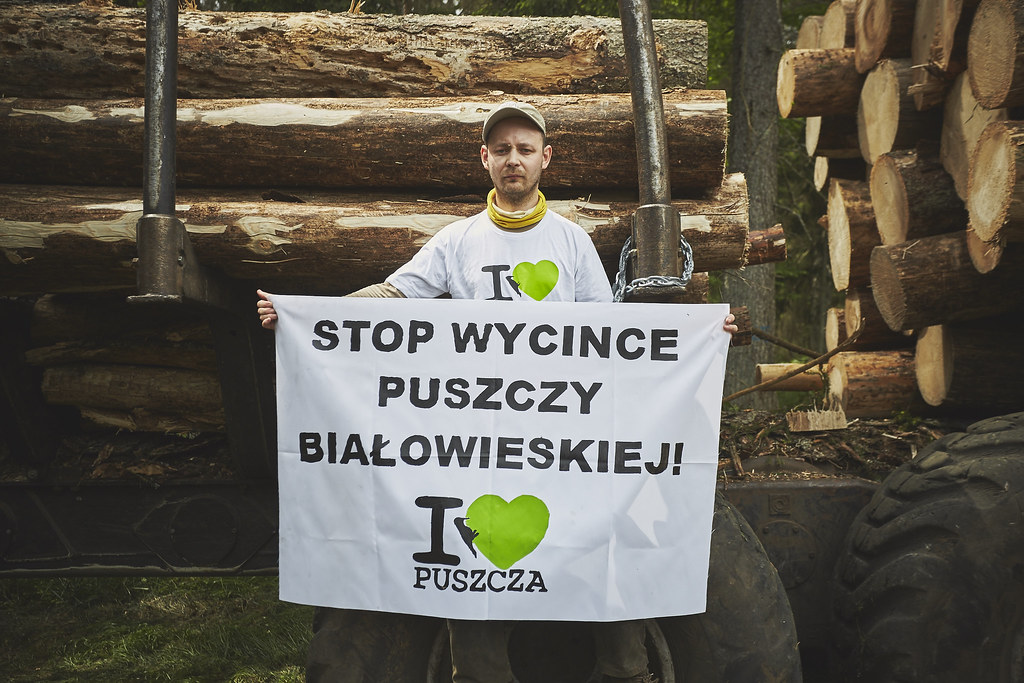
The grassroots mobilization in Poland also left some marks on European politics. When the European Commission organized public consultations of the EU biodiversity and forest strategies, the key policies concerning forests within the European Green Deal, the unified forest movement started mobilisation. Thousands of people took part in the consultations helping to counter a lobbying push from the Polish government and the logging industry, who called for the weakening of the forest protection provisions.
European policies concerning forest protection and management have the potential to bring together the Polish anti-logging movement with nature protection groups from other European countries. Over the next couple of years, biodiversity and forest strategies will be implemented across the EU. How it will be done will be partly shaped by the bottom-up pressure exerted on national and EU decision-makers. United, pan-European forest movement would undoubtedly help to press them for more ambitious forest conservation and contribute to neutralizing lobbying of the timber industry.

The case of the Polish anti-logging movement shows that grassroots organizing and bottom-up pressure have enormous potential in the fight to protect nature. It proves that making alliances and taking action for a common cause, don’t imply uniformity and centralization. It gives hope that a diverse, but well self-coordinated, and determined international climate-environmental movement has the strength to force the decision-makers to take immediate action to stop continuing exploitation of our shared natural habitat.


